Communication Network Interface CNI-800D User Manual CNI800D Instruction
Communication Network Interface Inc. CNI800D Instruction
Contents
- 1. This is EUT user manual
- 2. Installation instruction
Installation instruction
CNI-800D Installation Guide
For OEM Integrator
Ver. 1.1
CNI-800D
Radio Packet Modem
1999.3.26.
Communication Network Interface, Inc

CNI-800D Developer’s Guide
1
Table of Contents
n Modem Descriptions
1. Overview
2. Specifications and Features
2.1Environmental Properties
2.2 Electrical Properties
3. Physical Dimensions
4. Serial Interface between Application DTE
5. Power Supply and Current Usage
n Design Consideration
1. Product Applications
1.1 Use for Portable Terminal
1.2 Use for fixed mount
n Installation
1. Mounting
1.1 Fastening
1.2 Grounding
n Warning Label

2
n Modem Descriptions
1. Overview
CNI-800D enables digital data communication via DataTAC Network. This unit
supports Motorola’s RD-LAP 3.1& 3.2. And frequency band of 806-825 MHz for
in-bounding, 851-870 MHz for out-bounding are available.
This unit is two way wireless communication module that enables various Data
communications between Hosts and Terminals. Support for automatic Roaming
makes it possible to communicate while moving around.
By using Interface connector, this unit permits integration to various applications
without redesign and supports monitoring function.
2. Specifications and Features
2.1 Environmental properties
2.1.1. Operation Temperature : -20°C ~ +50°C
2.1.2. Storage Temperature : -35°C ~ +80°C
2.1.3. Humidity : working properly 8 hours after storing at 95% relative
humidity, non-condensing circumstance
2.2 Electric Properties
2.2.1. General Specs
a. Modulation : 4-level FSK
b. Communication Mode : Half Duplex
c. Transmission speed : 19,200bps
2.2.2 RF Interface
a. Transmit Frequency : 806-825 MHz
b. Receive Frequency : 851-870 MHz
c. Channel Spacing : 25KHz
2.2.3 Transmitter
a. RF output power : 1.0W
b. Frequency Stability : +- 1.0ppm
c. Modulation Stability : +- 5% (-20°C ~ +50°C, 806 ~ 825 MHz)
d. FM Deviation : 5.0 KHz +- 10%
e. Spurious : less than 60dB
f. Adjacent Channel leak : less than 60dB
2.2.4 Receiver
a. Sensitivity : -113 +- 3dBm (1% BER over all kind of data)
b. Channel Selectivity : more than 55dB

CNI-800D Developer’s Guide
3
c. Intermodulation : more than 50dB
d. Spurious Rejection : more than 60dB
e. Image Rejection : more than 50dB
f. Hum & Noise Ratio : less than 30dB
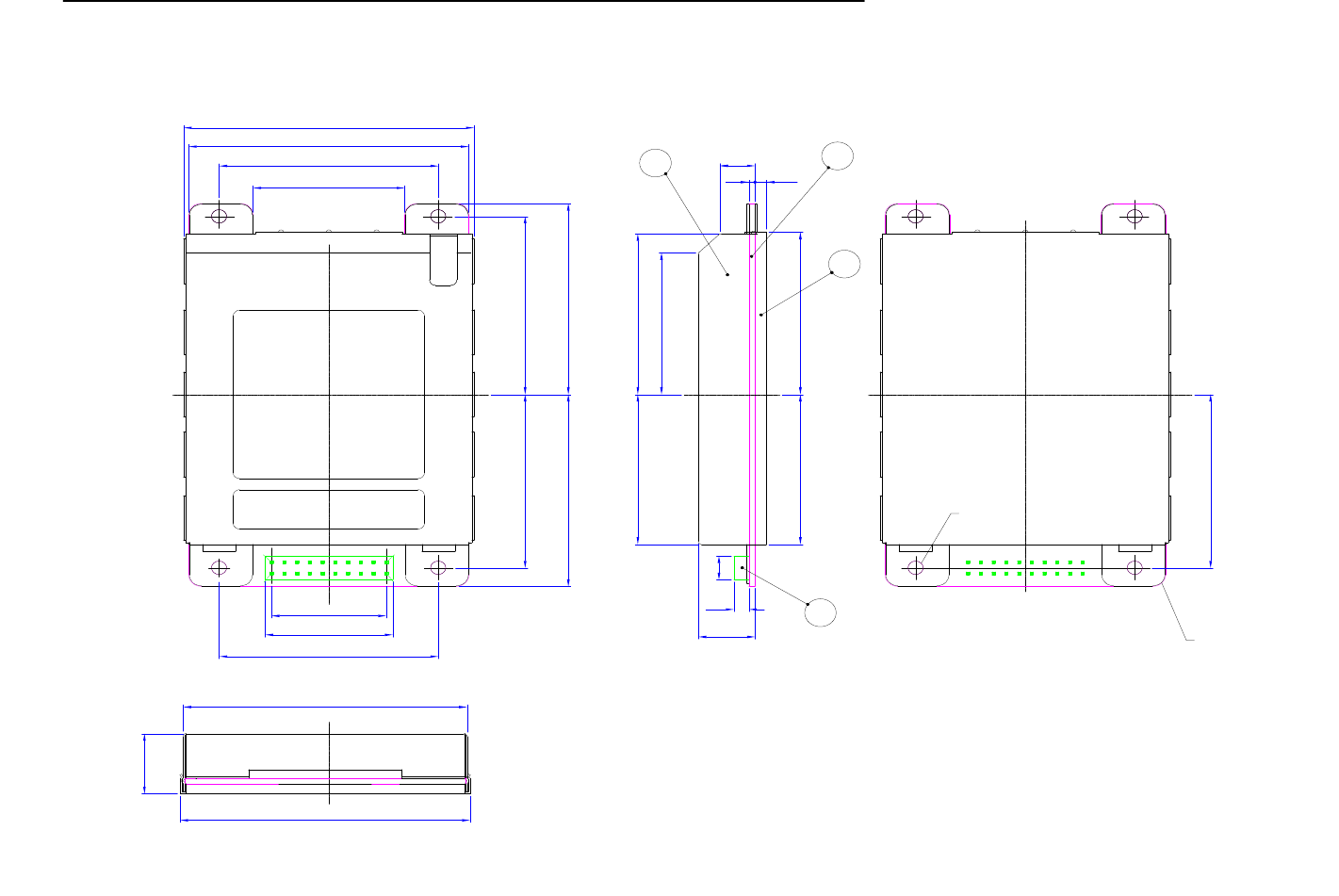
4
3. Physical Dimensions
4-%4-%C2.4 (HOLE)
19
1
10.7
45.5
44.6
220
8-R2.0
8.9 4
34.4
18 (2 X 9)
20
30.9
TOP VIEW
31.7
+0.2
23.8
34.4
(45.62)
44
0
30.9 (CONNECTOR)
26.7
34.2 26.7
28.6
25.2
34 28.9
2
15.5
1 1.8 3
4.2
2.3
BOTTOM VIEW
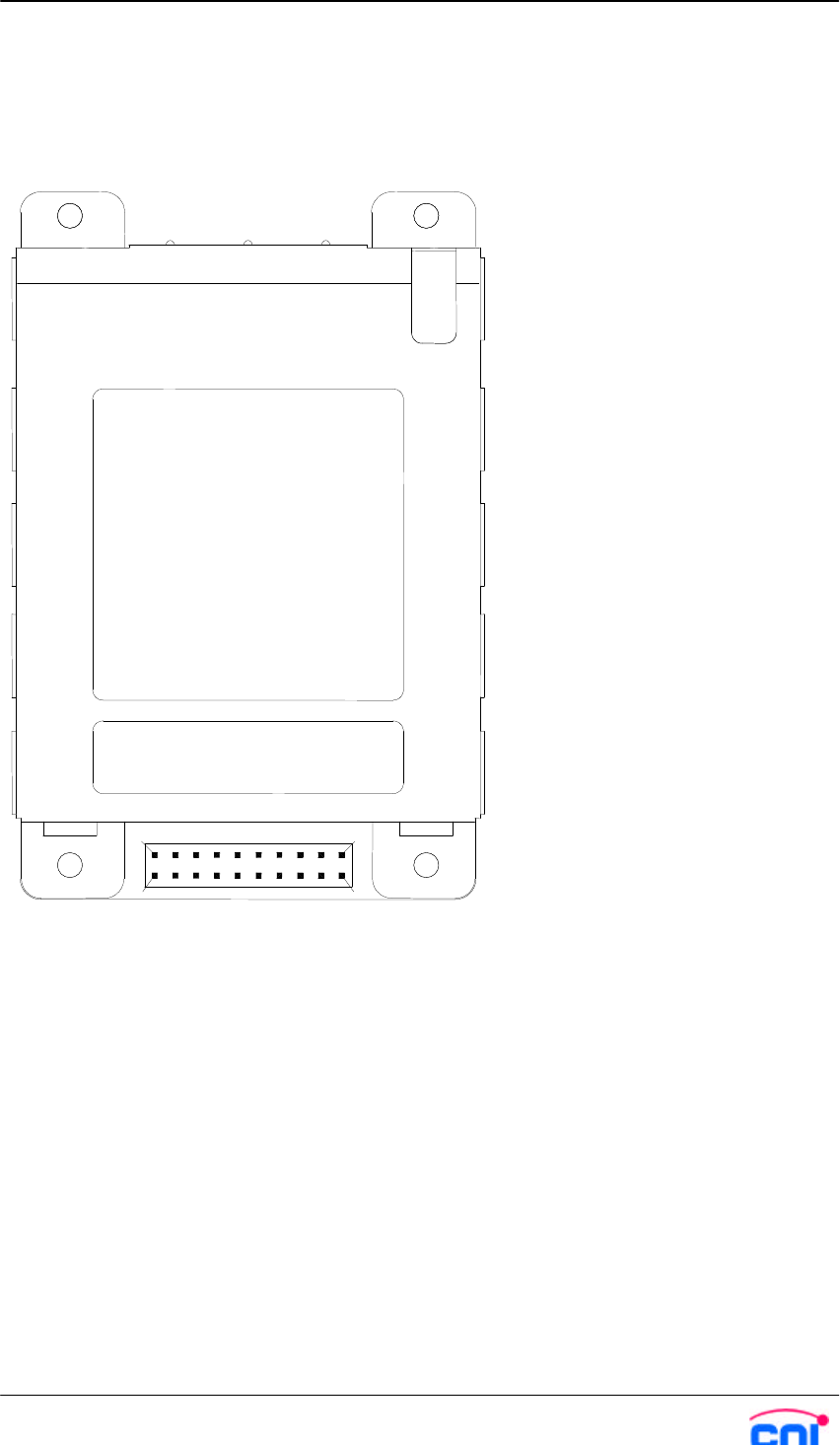
CNI-800D Developer’s Guide
5
4. Serial Interface Between Application DTE
This unit can be easily integrated into anywhere of the wireless modem adopted
device.
PIN ASSIGNMENTS
1. RESET : External Reset
2. TXD : Transmit Data
3. PWRON : RPM Power On/Off
4. RXD : Receive Data
5. SENSE1 : Status Input 1
6. RTS : Request to Send
7. SENSE2 : Status Input 2
8. CTS : Clear to Send
9. SENSE3 : Status Input 3
10. DTR : Data Transmit Ready
11. SENSE4 : Status Input 4
12. DSR : Data Set Ready
13. MAGWAIT : Message Wait
14. DCD : Data Carrier Datect
15. INRANE : In Range Indicator
16. RI : Ring Indicator
17. LOWBATT : Low Battery
18. 4.0V PWR : 4.0V Power Supply
19. GND : Ground to Host
20. 4.0V PWR : 4.0V Power Supply
119
2 20
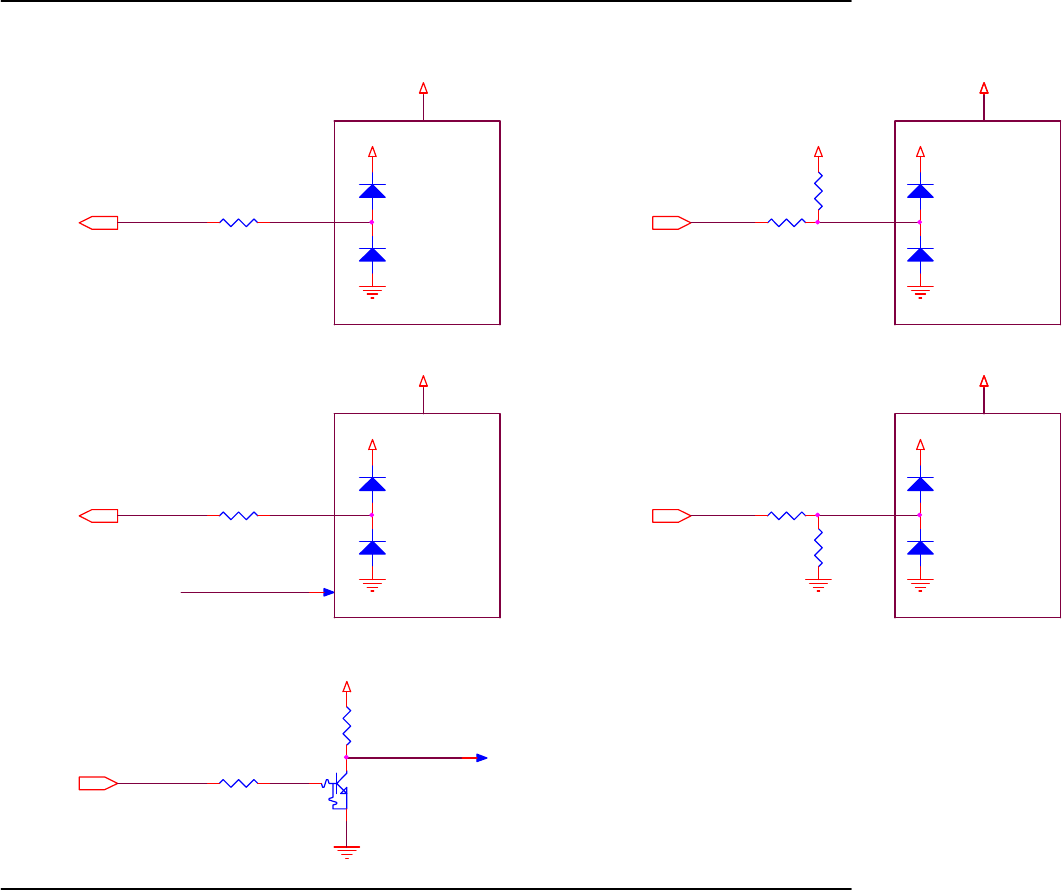
6
3V
3V
3V3V
3V3V
3V
3V3V
3V
3V
3V
CPU CPU
CPU CPU
CMOSCMOS
CMOSCMOS
RXD
DCD-
DSR-
RI-
CTS-
TXD
DTR-
RTS-
MSGWAIT-
INRANGE-
LOWBATT-SENSE1-4
TxDA RxDA
INDICATE SENSE
PWRON CPU
RESET-
INTERFACE CIRCUIT OF CNI-800D
27 27
10K
10K330K
10K
10K
27
HOST HOST
HOST
HOST
HOST
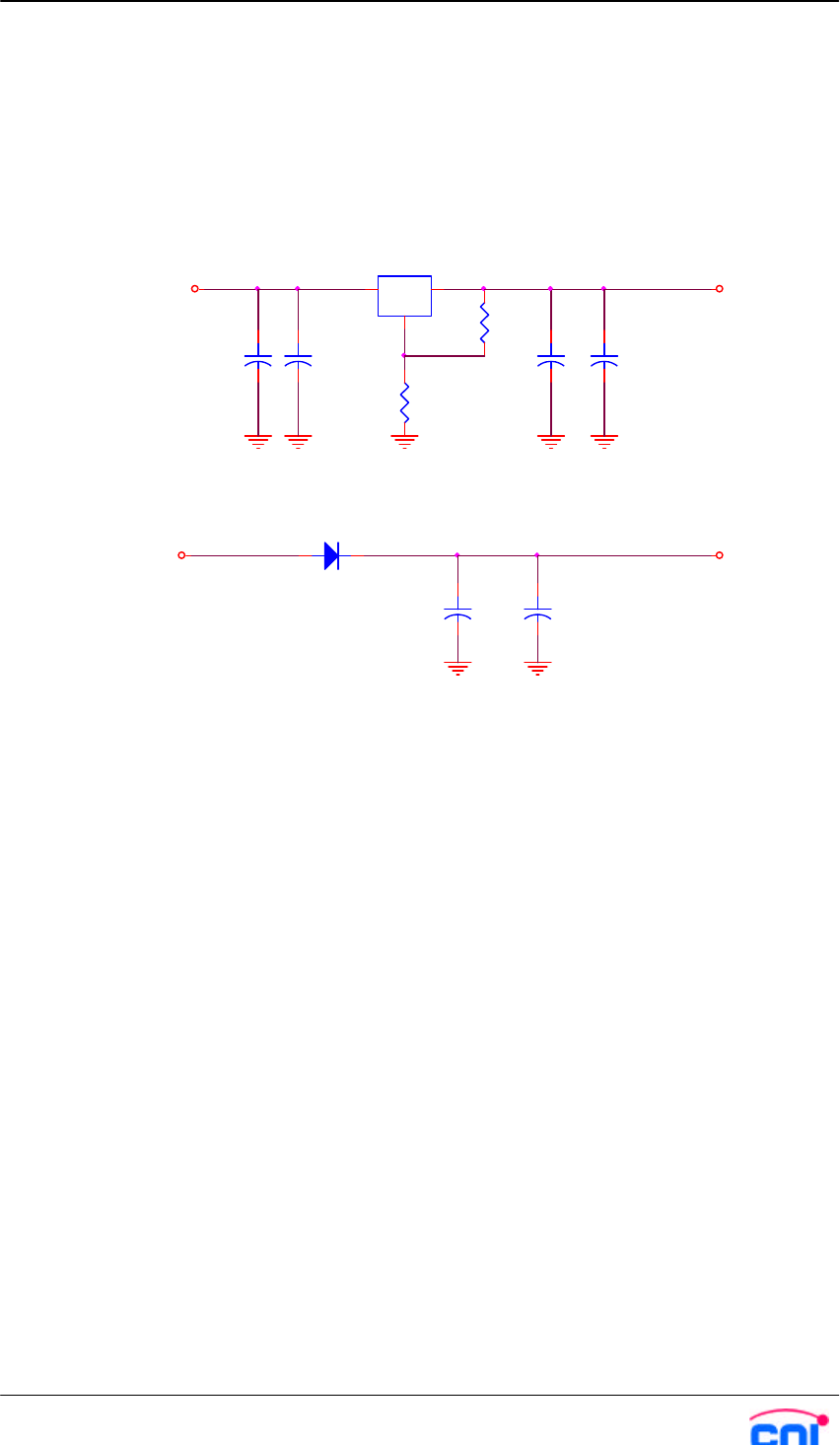
CNI-800D Developer’s Guide
7
5. Power Supply and Current Usage
5.1 Example of Power Supply from out-source : input Voltage 4V±10%,
more than 1.1 A
5.2 Current Usage
TX : 1.1A
RX : 70mA
St-By : 30mA
Average Current Usage in Standby Mode is about 30.6mA
n Design Considerations
To integrate a wireless modem, there are several issues that need to be addressed and considered. Internal
connections and placement are critical to a successful implementation. A successful design requires
attention to several support mechanisms as following:
- DC Power
- Serial interface and control
- Mechanical mounting
- Software
- Antenna
- RF control
44V to 7V 4V
5V 4V
Determine Ratio of R1 & R2
by Input Voltage
RPM POWER INPUT
RPM POWER INPUT
CASE 1
CASE 2
LM317
I
3O2
A
1
R1
R2
100uF
+
104
+
100uF
+
104
+
D?
DIODE
100uF
+
104
+

8
1. Production Applications
The OEM wireless modem is well suited for mobile and fixed applications. The wireless modem enables
user to send/receive data anytime anywhere, and can provide communications for a wide variety of
products. 1.1 Portable Terminal Use
Portable designs produce good environment for an integrated modem. The portable terminal is
typically battery powered, subject to temperature extremes, and designed to be physically
strong. When designing portable device, user needs to pay attention to the following issue:
- DC power noise levels on the host interface
- Minimum operating voltage levels
- Device internal ambient temperature
- Antenna gain and proximity to user
- Mechanical design for drop, vibration, dust, salt and liquid spill.
Note : Regarding this last point, CNI-800D modem is designed on the assumption that the host device
will control these conditions.
1.2 Fixed Mount Usage
Fixed-mount usage eliminates most of the mechanical constraints of handheld designs. The
core requirement applies, but fixed usage does not present any special conditions to address.
n Installation
Installing CNI-800D modem is very simple as follows:
1. Place the modem to connector on product housing, and apply a little force to push it down to be
connected.
Caution : Care not to bend or damage the connector pins.
2. Use four #2-56 UNC 2A machine screws to tie up the modem as the figure shown below.
3. Connect modem connection cable to a small hole provided at the rear of the modem.
4. Connect the modem connection cable to Antenna
1. Mounting
Proper mounting of the modem requires a combination of securely fastening it within the product housing
as well as adequately grounding the modem case to the housing.
1.1 Fastening
Mount the modem to the rigid OEM product housing by using four #2-56 UNC 2A
machine screws as the figure shown below:
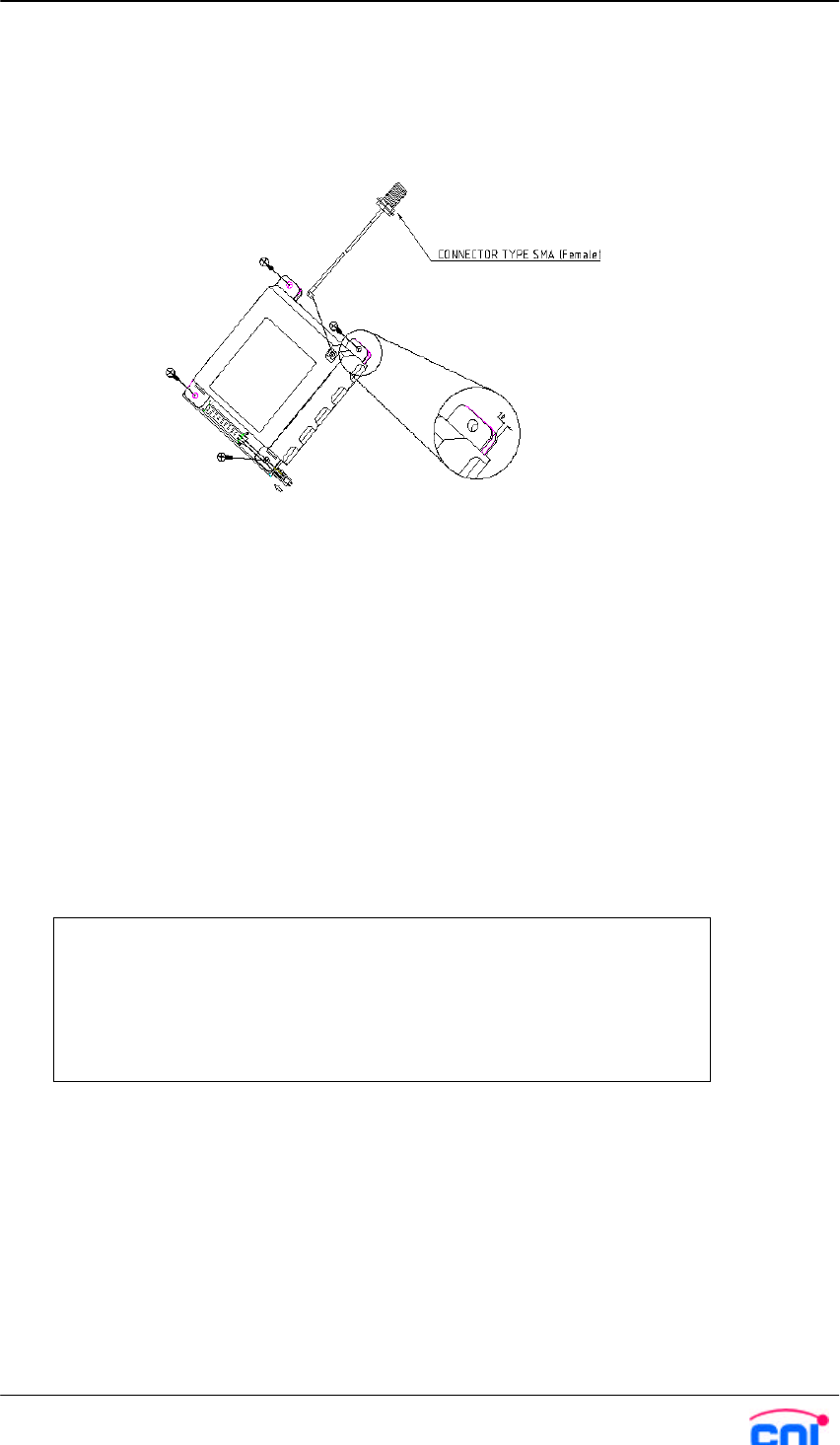
CNI-800D Developer’s Guide
9
1.2 Grounding
For CNI-800D modem, the pin number 19 of connector on the modem is
ground pin. So if user properly place the modem, ground is automatically
done.
n Warning Label
Following warning label shall be attached on the devices using CNI-800D modem.
While this device is in operation, a separation distance of
at least 20 centimeters (7.87 inches) is maintained between
radiating antenna and the body of the user or nearby persons
in order to meet the FCC RF exposure guidelines.